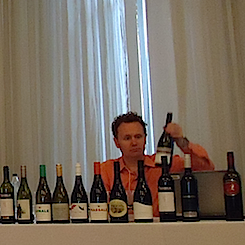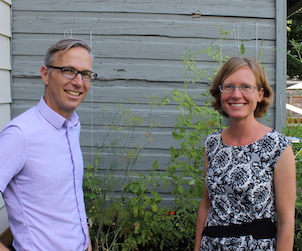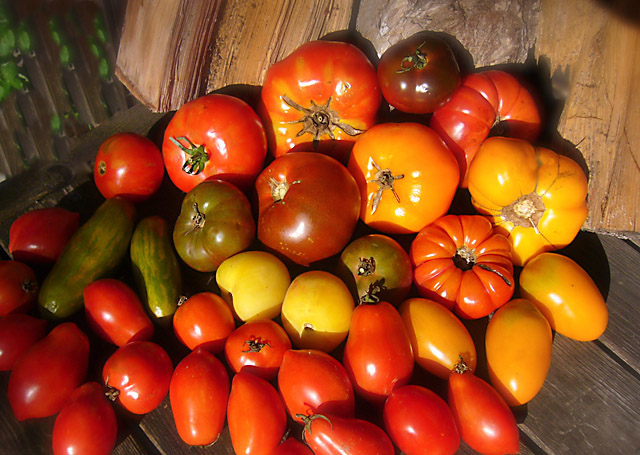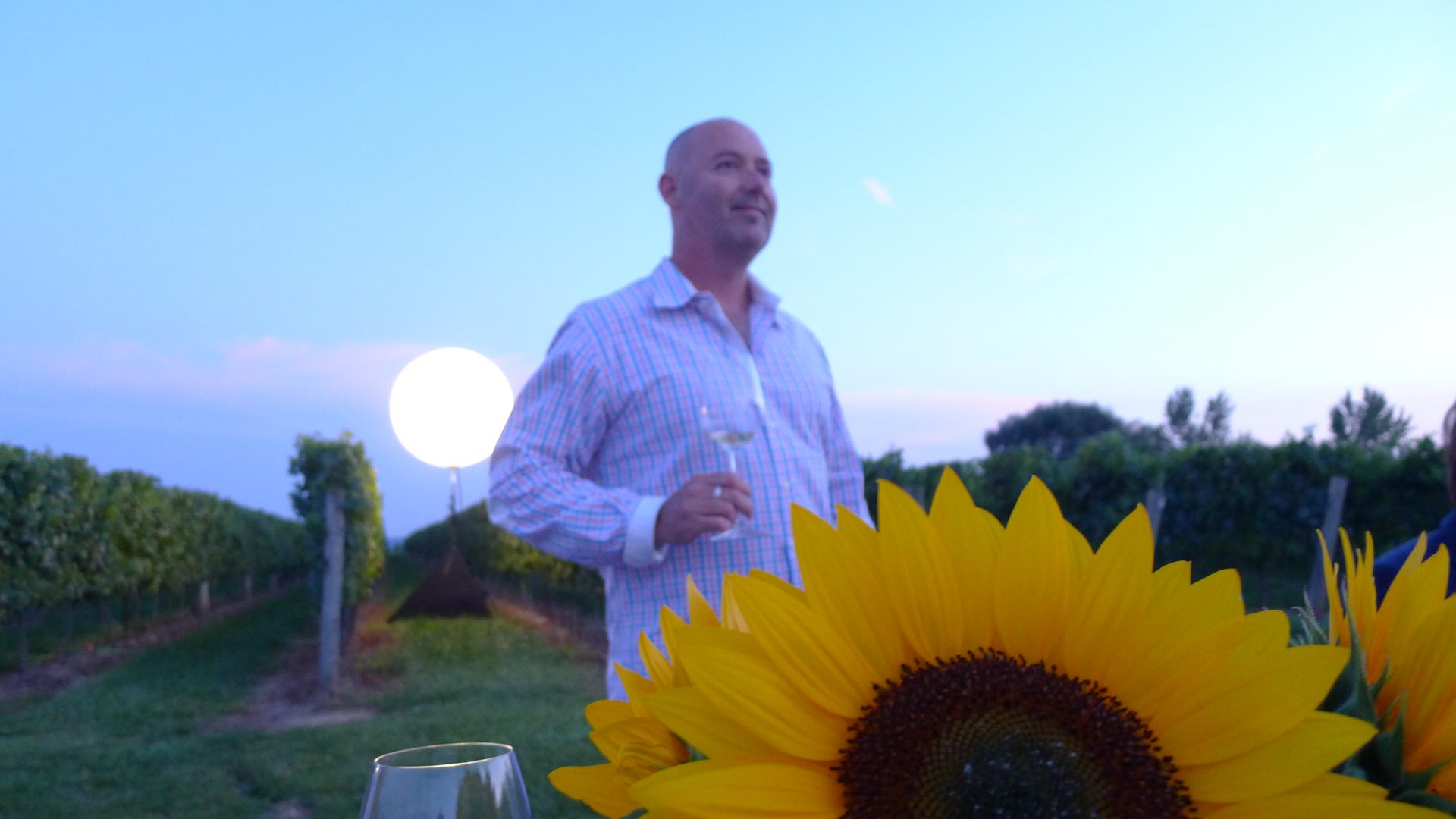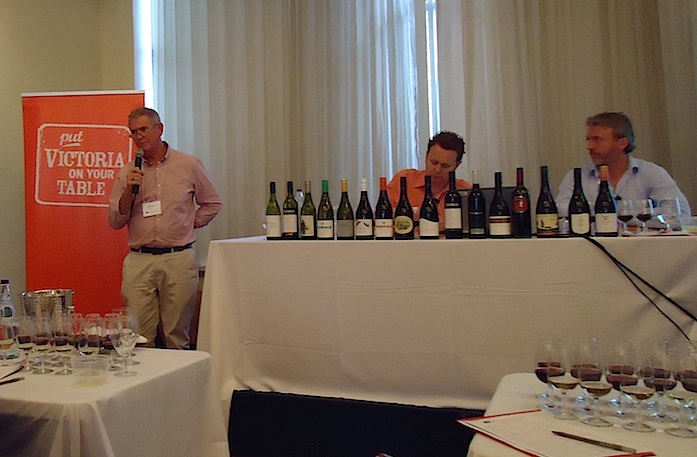
Yabby Lake’s Keith Harris talks to the recent ‘Victoria’s Secret’ tasting in Toronto. To his right, leading the seminar are GFR’s Jamie Drummond and Wine Australia’s Mark Davidson.
Last Wednesday, Good Food Revolution’s very own Jamie Drummond joined Wine Australia’s Education Director Mark Davidson to lead a structured tasting and seminar for media and trade featuring many of the wines from the State of Victoria that are being released into the LCBO’s Vintages program on July 21. On hand were several representatives from the wineries, including Yabby Lake’s Keith Harris who planned to stay in the region for a few days, as he is attending the International Cool Climate Chardonnay Celebration in Niagara…
What? A “cool climate” Australian wine? How can this be?
The purpose of the tasting, and the whole push at the LCBO for wines from Victoria’s many and diverse wine growing regions, was to defy some of the prejudices that have built up around Australian wine over the last two decades. For many consumers and professionals, the mention of Aussie wine conjures up taste memories of big, over the top styles: oaky whites and jammy reds. Davidson candidly admitted he thought that, rightly or wrongly, Australian wines were at an “an all time low in terms of the attitude of the Canadian trade.” The 16 wines from 12 sub-regions of Victoria stood in remarkable contrast to that stereotype and, judging by the comments and questions directed at Davidson and Drummond, won over a hardened set of Toronto’s top sommeliers and wine writers.
Davidson explained to the group that he thought the image Australian wines had been harmed by the country’s success at exporting in the 1990s, so that in the minds of many there were “two competing styles: cheap and cheerful or Parker wines,” alluding the (in)famous taste-making editor of The Wine Advocate. But, Davidson went on to argue, those wines were developed to meet specific tastes at a specific time, and there is an entire tradition and diverse geography in Australia, but particularly Victoria, which is the furthest south of the regions, save Tasmania and produces the lighter, leaner more food-friendly wines that tend to express terroir over technique.
Before the group got down to tasting, Davidson made two empirical points about Australian wine making generally: 1) they’ve been doing it for a long time (1840s saw the first boom) and have some very old vines, which never were affected by phylloxera; and 2) Australia’s a big country (about the size of the USA minus Alaska) with all kinds of climates and geography.
And the wines? By consensus of the crowd and opinion of your correspondent they did just what the Wine Australia organizers had planned: they showed exactly those elements like acidity and minerality that by habit many had not associated with Australian wines. The tasting was organized into three flights: five whites, four Pinot Noirs and seven Shiraz. There was also a pour of the 2008 de Bortoli Noble One ($29.95 375ml, LCBO# 917252), their famous (and delicious) Botrytis affected Semillon, but this “sticky wine” is actually made down the road in New South Wales.
All 16 of the Victorian wines showed very well. The Shiraz in particular was, to borrow Master Sommelier Bruce Wallner’s term at the tasting “light on it’s feet”. Watch for the 2010 Tar & Roses Shiraz ($21.95, LCBO# 282731) in the August 18th Vintages release as an emobiment of this more restrained, white peppery-style. Of the whites, the 2007 Tahblik ‘Museum Release’ Marsanne ($21.95, LCBO# 276980) stood out from the crowd with it’s almost Riesling-like petrol notes and remarkable fresh acidity for a five year old wine. But the real game changers, I think, were the Pinot Noirs. Bad things can happen to that fragile grape in the New World. The Victorian examples tasted were downright Burgundian, delicate and floral. De Bortoli use absolutely no oak in their 2010 Windy Peak Pinot Noir, which means they can get it down to a price point of under $20 ($17.95, LCBO# 48587). It’s a great light, food-friendly wine, but the real stand out from the July 21 release was the 2011 Kooyong Massale Pinot Noir ($39.95, LCBO# 281055) that displayed the most amazing herbal notes over top bright cherry fruitiness.
Point well taken. The wines of Victoria (or at least the ones coming through the LCBO on July 21 and beyond) are food friendly, subtle and complex in the way that one often describes “cool climate” wines.
 Malcolm Jolley is a founding editor of Good Food Revolution and Executive Director of Good Food Media, the not-for-profit corporation which publishes it. Follow him at twitter.com/malcolmjolley
Malcolm Jolley is a founding editor of Good Food Revolution and Executive Director of Good Food Media, the not-for-profit corporation which publishes it. Follow him at twitter.com/malcolmjolley

